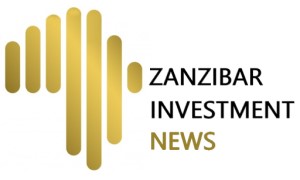Whatever one thinks of China, you have to admire their commitment to economic growth. Whether driven by the Chinese state’s desire to legitimise its rule or by an altruistic goal of national development, Chinese economic growthism is impressive. Nothing good ever comes from economic stagnation.
I am a firm believer in economic growth, especially for developing nations like ours. Without growth, development is an illusion at best. Any government that cannot stimulate economic growth has no business being in power. And manufacturing is the key to sustainable economic growth. That is why it is important to understand how different nations industrialised to appreciate how industrialisation can be achieved.
The history is long and varied. The UK pioneered industrialisation with advances in textiles, steam power, and iron production. The US industrialised in the 19th century, utilising natural resources, mass production, and railroads. Russia’s industrial growth was state-driven, focusing on heavy industries during the Soviet period. Japan rapidly industrialised during the Meiji era by modernising its economy and adopting Western technologies. North Korea industrialised, thanks to the Japanese occupation. Then there is China, one of the most remarkable industrialisation stories of modern times.
China’s transformation into a global manufacturing giant began in the late 1970s under Deng Xiaoping. Frustrated by the stagnation caused by Maoist policies, Deng initiated a series of market-driven policy reforms that made China what it is today.
A stone away from China lay the city of Hong Kong, then under the British Commonwealth. Hong Kong, despite being 8,600 smaller than China, commanded an economy equivalent to 12 percent of China. Hong Kong highlighted China’s untapped potential if it could ride the wave that Hong Kong was riding: attract FDI and technology and operate in a competitive regulatory environment. But opening the whole of the Middle Kingdom at once to capitalise on such opportunities presented challenges that were Brobdingnagian in scale.
Deng’s answer was to create special economic zones (SEZs). He established the first SEZ in 1980 in Shenzhen, allowing foreign investment and private businesses for the first time. Shenzhen’s economy started growing at an astonishing rate averaging above 20 percent a year for 40 years. Today, Shenzhen is a major centre for technology, finance, and manufacturing, home to giants like Huawei and Tencent, and with about 300 Fortune 500 companies in operation there.
Deng’s solution can work for Tanzania too. Currently, Tanzania’s manufacturing sector contributes just 8 percent to GDP—hardly a driving force in the economy. While manufacturing is essential for job creation and value addition, this modest contribution indicates vast untapped potential. With nearly one million youths entering the job market annually, the sector’s 300,000 employees are insufficient to address the country’s growing employment needs. Urgent and large-scale action is needed to transform this sector.
But unfortunately, the business environment leaves so much to be desired. Statistics such as Ease of Doing Business and reports such as the Blueprint for Regulatory Reforms highlight the challenges that Tanzania must address to succeed in manufacturing. Only God knows how many opportunities have been lost due to nonsense such as the lack of a reliable supply of energy, water, and skilled labour or delays in business permits and other licences. Solving all these problems to achieve take-off for manufacturing would take an eternity, and countless other opportunities would be lost.
This is where SEZs come in. SEZs could be the catalyst Tanzania needs to kickstart its manufacturing sector. By creating self-contained business hubs with streamlined regulations, tax incentives, and world-class infrastructure, SEZs can attract investment, develop skills, and boost exports. The reason is that these zones bypass the country’s bureaucratic quagmire, allowing businesses to focus on growth, not red tape. The last thing that any serious investor wants is to deal with the nonsense that we are used to putting up with in Tanzania. But when we get our house in order, the potential is to have the sector capable of absorbing millions of people while energising the economy with much-needed manufacturing output.
When done right, SEZs’ growth potential is remarkable. Shenzhen, Jebel Ali, Masdar, Singapore Freeport, Hong Kong Technology Parks, Songdo in South Korea, and many others are a testament to that. While traditionally SEZs often started by providing logistics and manufacturing services, the trend now is to have autonomous, privately governed, multiple-use smart SEZs complete with financial services, residential blocks, and so on. The idea is to ensure that SEZs are places not only to work but also to live and play. This is what the Hondurans are trying to achieve at Prospera. To some extent, this is what the South Africans are trying to do also in Limpopo. One can only wish them well.
For our vision 2050, I see dozens of industrial parks in multiple SEZs across the country providing millions of formal employments and contributing at least a third of Tanzania’s GDP by 2050. I see SEZs becoming a model that will normalise business and regulatory competitiveness across the country. But, above everything, I see SEZ and manufacturing catapulting productivity thus making the economy more competitive in the long term.















